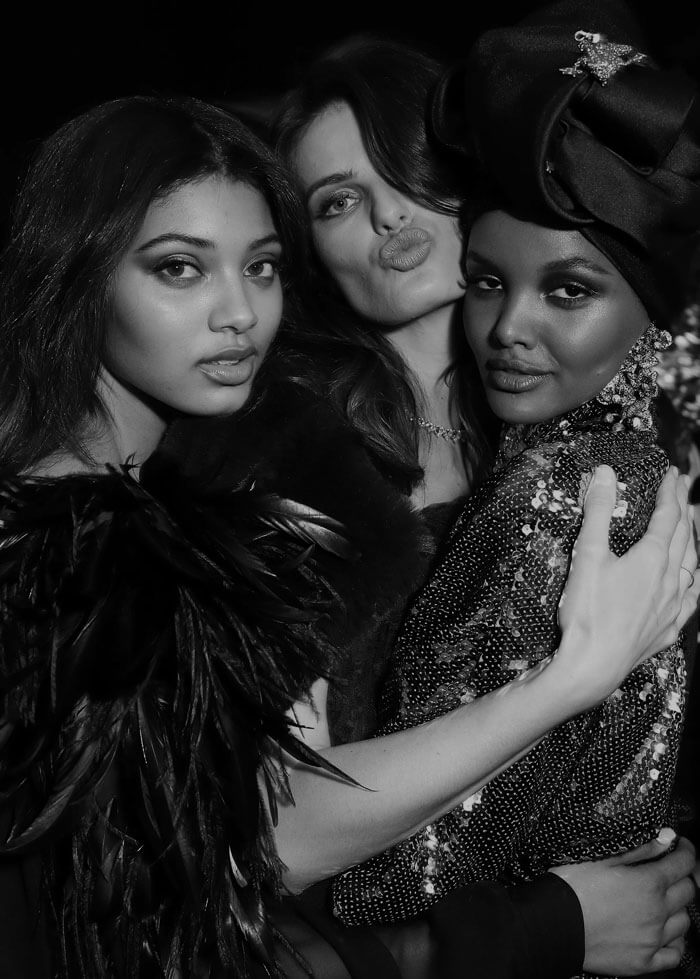Aria Kurzawa has an estimated net worth between $500,000 and $1 million as of 2025, representing her financial status as a young digital creator. The 6-year-old social media star earns money through her YouTube channel “Aria Plays” and appearances on her siblings’ popular channels. Her income comes from YouTube ad revenue, brand sponsorships, and merchandise sales tied to her family’s online presence. However, precise figures remain unclear because children’s earnings are typically managed through trust funds and minor’s protected assets arrangements that prevent immediate access to funds.
Aria Kurzawa Net Worth
The estimated range sits between $500,000 and $1 million in 2025. This figure combines earnings from multiple sources across several years. Most financial information about child creators remains private, making exact calculations difficult.
Aria’s wealth stems primarily from her YouTube presence and represents her accumulated wealth since entering the digital space. Her personal channel “Aria Plays” has accumulated 272,000 subscribers and 32.8 million total views since launching in December 2020. She also appears regularly on the family’s main channel “SIS vs BRO,” which boasts 14.6 million subscribers and generates substantial influencer earnings. These appearances contribute significantly to her overall monetary value. The family’s combined social media revenue creates opportunities that individual channels might not achieve alone.
Financial estimates for child influencers remain speculative amounts without official disclosures. Parents typically manage these earnings through legal structures that protect minors’ income. Her siblings’ success provides context—Karina Kurzawa reportedly has a total wealth between $4 million and $14 million, while Ronald sits at $1 million to $3 million. Aria’s lower net value reflects her younger age and fewer years of content creation. The Kurzawa family wealth collectively represents one of the most successful family-run content operations on YouTube.
Understanding the true scope of her economic status requires examining not just gross earnings but also financial liabilities and expenses. Production costs, taxes, and legal fees reduce gross income significantly. The word “worth”—derived from Old English weorþ meaning value or merit—takes on dual meaning here. Beyond monetary value, her presence adds intangible value to family content through her personality and viewer appeal.
Who Is Aria Kurzawa? Early Life, Family & Online Beginnings
Aria Kurzawa was born on June 27, 2019, in Marbella, Spain. She is the youngest child of Freddy and Hola Kurzawa. Her father works in real estate and runs his own YouTube channel, contributing to the family’s overall fortune.
The Kurzawa family moved from Canada to Spain before Aria’s birth. Her parents chose this location partly due to Canada’s harsh winters affecting the family. Aria grew up surrounded by cameras and content creation. Her older siblings, Karina (born 2007) and Ronald (born 2008), had already built massive online followings before she arrived. An Instagram account was created for her on the day of her birth, showing how early she entered the digital content world. This parent-run Instagram has earned more than 200,000 followers as of 2025.
Aria’s first major appearance came in 2019 when her siblings announced their mother’s pregnancy in a viral video titled “Our Mom is Pregnant!!!!” The announcement video showed Karina and Ronald discovering they would have a baby sister through a surprise gift box. That video generated millions of views and set the stage for Aria’s eventual online presence. By December 2020, when she was just 18 months old, her parents launched her dedicated YouTube channel “Aria Plays,” marking the beginning of her journey toward building capital through content creation.
How Aria Kurzawa Earns Money
Her income flows from three main sources: YouTube advertising, sponsorship deals, and merchandise sales. Each stream contributes differently to her total earnings. Understanding these revenue composition elements helps explain the $500,000 to $1 million estimate and illustrates her financial success at such a young age.
YouTube Earnings Component & Creator Cuts
YouTube pays creators through its Partner Program, which shares ad revenue with eligible channels. However, content creator income for kids’ channels faces strict limitations. The Children’s Online Privacy Protection Act (COPPA) restricts how platforms can collect data on viewers under 13. This means videos marked “Made for Kids” cannot use personalized advertising, which dramatically reduces earnings.
Standard YouTube content typically earns $2 to $5 per thousand views through ads. Kids’ content earns only $0.25 to $0.35 per thousand views due to COPPA restrictions. Aria’s channel with 32.8 million total views might have generated roughly $8,000 to $11,500 in direct ad revenue over its lifetime. This calculation assumes most views come from monetized content and uses the lower kids’ content rate. Additional earnings come from her appearances on SIS vs BRO, where the family shares revenue from that channel’s massive viewership. The main family channel generates an estimated fortune between $1.9 million and $2.7 million according to industry estimates.
YouTube monetization for children’s content requires careful management. The platform takes 45% of ad revenue before paying creators. For a video earning $1,000 in ad sales, YouTube keeps $450 and the creator receives $550. This split applies across all monetized content. Family channels often combine earnings into shared accounts managed by parents or guardians.
Sponsorships, Merch & Brand Deals
Brand partnerships provide far more income than ads for successful family channels. Companies pay creators to feature products in videos or social media posts. The Kurzawa family has worked with toy manufacturers, children’s brands, and lifestyle companies. These deals can pay anywhere from a few thousand to tens of thousands of dollars per sponsored video depending on audience size and engagement.
Merchandise sales represent another income stream. The SIS vs BRO channel sells branded clothing and accessories through an official website. While Aria doesn’t have her own merchandise line yet, she benefits from the family’s collective brand. Revenue from merchandise sales gets distributed across family members based on their contribution to the brand. Her appearances in family content and her growing recognition among young viewers add value to these products.
Sponsorship deals for child influencers raise ethical questions that affect earnings. Many brands now carefully vet family channels to ensure proper treatment of children and transparent advertising disclosures. Stricter regulations mean fewer sponsorship opportunities but potentially higher payments for families that maintain strong reputations. The Kurzawa family’s established presence and professional approach likely command premium rates from advertisers.
Estimating Her Net Worth: Methodology & Ranges
Financial estimates for child influencers rely on multiple data points and assumptions. No single formula captures the full picture. Analysts examine view counts, subscriber growth, engagement rates, and comparable channels to build estimates. This wealth assessment process involves both quantitative metrics and qualitative judgments about earning potential.
The starting point involves calculating direct YouTube earnings. With 32.8 million views on her personal channel, Aria likely earned $8,000 to $11,500 from ads alone. However, this represents only a fraction of her total income. Appearances on SIS vs BRO contribute significantly more. That channel has generated over 6.1 billion total views since 2016. Even a small percentage of that revenue allocated to Aria adds substantial value to her net worth. These figures don’t include her liquid assets or any investments made on her behalf by her parents.
Sponsorship deals and brand deals probably account for 60-70% of her total earnings. Family channels with millions of subscribers command high rates for integrated sponsorships. A single sponsored video might earn $10,000 to $50,000 depending on the brand and promotion scope. If Aria appeared in 20-30 sponsored videos over four years, that alone could generate $200,000 to $500,000. Adding merchandise sales and other revenue sources pushes the total toward the $500,000 to $1 million range.
The wide range reflects uncertainty about exact payment terms and revenue splits. Parents might allocate different percentages to each child based on their contribution. Aria’s younger age means fewer solo appearances compared to her siblings. Legal requirements also mandate that children’s earnings be held in trust accounts until they reach adulthood. These funds grow through investments, potentially increasing her actual net worth beyond direct earnings.
Growth, Metrics, and Trends in Her Online Career
Aria Plays launched in December 2020 and grew steadily over four years. The channel reached 272,000 subscribers by 2025. This represents modest growth compared to her siblings’ channels but remains impressive for a toddler-focused channel focused on toy unboxing content.
Her content focuses on toy unboxing and playtime videos. These formats appeal to very young viewers who enjoy watching other children interact with toys. Average likes per video sit around 6,900, indicating solid engagement from her audience. The channel has uploaded 123 videos total, averaging about 267,000 views per video. This consistency shows dedicated viewership even if growth hasn’t exploded like some viral kids’ channels.
Online creator income depends heavily on engagement metrics beyond just view counts. Watch time matters tremendously for YouTube’s algorithm. Longer videos with higher completion rates get promoted more aggressively. Aria’s videos typically run 5-10 minutes, which allows for multiple ad placements. Her young age limits how much direct content she can create, relying heavily on parental guidance and production support.
Trends in children’s content have shifted significantly since 2020. Shorts and bite-sized videos now dominate youth viewership. TikTok and YouTube Shorts compete for attention from both creators and audiences. Aria’s channel has adapted by incorporating shorter formats alongside traditional videos. The family’s multi-channel strategy helps protect against algorithm changes on any single platform. SIS vs BRO recently returned after a two-year hiatus, showing the family’s ability to maintain relevance despite breaks.
Risks, Uncertainties & Why Precise Figures Are Hard
Exact financial data for child influencers remains closely guarded. Families rarely disclose specific earnings publicly. Legal protections and privacy concerns create additional barriers to transparency. The distinction between publicly reported figures and actual value—whether personal or financial—often remains blurred.
YouTube’s algorithm changes create significant income volatility. A channel earning $5,000 monthly might drop to $2,000 after an update that reduces recommended views. Kids’ content faces extra scrutiny under COPPA regulations. YouTube continuously updates its policies around children’s videos, sometimes demonetizing content retroactively. These shifts make long-term income projections unreliable. What works today might not work next year.
Platform policies around child safety have tightened dramatically since 2020. YouTube removed comment sections from most kids’ videos to prevent inappropriate interactions. This change reduced engagement metrics that advertisers value. The platform also limits which types of ads can appear on children’s content. These restrictions directly impact revenue. Creators must constantly adapt their content strategy to maintain income levels while avoiding any actions that might create financial liabilities through policy violations.
Legal frameworks for child influencer earnings vary by location. Spain, where the Kurzawa family resides, has different regulations than the United States or Canada. Some jurisdictions require specific percentages of children’s earnings be placed in blocked trust accounts. Others mandate work permits and limit filming hours. Parents manage these requirements, but compliance adds complexity to financial planning. Aria’s actual accessible net worth might differ significantly from her total earnings due to these legal protections.
The public nature of wealth estimates creates another challenge. Numbers published on biography sites often lack proper sourcing. One site might claim $500,000 while another says $2 million for the same person. These figures get repeated without verification. Our estimate of $500,000 to $1 million reflects conservative calculations based on verifiable metrics like view counts and typical social media revenue rates. The true number could be higher or lower, highlighting the inherent challenges in conducting accurate wealth assessments for private individuals, especially minors.
Key Takeaways:
- Aria Kurzawa’s net worth likely ranges from $500,000 to $1 million based on her YouTube presence, family channel appearances, and sponsorship deals since 2020, representing significant economic prosperity for such a young creator.
- Kids’ content earns 90-95% less per view than general content due to COPPA restrictions on personalized advertising, making brand partnerships more valuable than ad revenue and affecting overall financial success metrics.
- Her earnings are tied to her siblings’ massive success on SIS vs BRO (14.6 million subscribers) and benefit from the family’s established reputation with brands and audiences, creating synergistic revenue streams.
- Legal protections require her income be managed through trust structures that prevent immediate access to earnings, meaning her actual accessible wealth differs from total earnings—a critical aspect of understanding minor’s protected assets.
- Financial estimates remain speculative without official disclosures because families rarely publish exact earnings, and multiple factors affect how revenue gets distributed among family members, making precise wealth assessment challenging.











